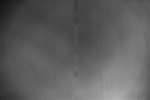Hi everybody !
First of all, I would like to precise I'm a beginner in all of this : stack, DOF, etc. But I've read a lot, and I think I'm rather aware of basic concepts. I'm shooting with a D850 unmodded, with a Tamron 35mm f1.4 @ f2 ; 2min ; ISO 400 for this example.
I'm facing a problem, and I cannot find its origin. After DBE, I have a kind of ring in my picture. And I cannot remove it. It's "subtle" but increasing with further post processing. Here with a huge stretch : https://drive.google.com/file/d/1kDfD5VtCXcA8sZnK-dKf5t6tgLzifM8j/view?usp=sharing
It may come from the flat, so I did a loooot of tests : expose to the left, to the right, centered, on the sky, using a teeshirt, high ISO, low ISO, fast flat, low flats... I used 1, 15 and 30 flats to calibrate. With other post-processing software, the same occurs. I try to stack uncalibrated raw files, and the ring seems to be here as well.
I've read this : https://www.cloudynights.com/topic/557931-concentric-coloured-rings-caused-by-flats/ ; and this https://www.cloudynights.com/topic/746131-nikon-coloured-concentric-rings/ but not sure if related.
Or, maybe I'm not good at using light pollution removal tools. Or I failed, each time, doing proper flats. I'm currently stack an other object, with another lens (90mm), from another place... I will see if I observe the same, to check if it comes from my camera.
Do you have other ideas of what I could check ? Here is a flat, a bias and a light (no dark as I was at ISO 400 and my sensor's camera is really powerfull) :
It's the first time I ask on a forum a solution, normally I always find it by myself. ?
PS : just an idea by writing, the focal could be the problem ? 35mm on a full frame sensor is quite wide.
First of all, I would like to precise I'm a beginner in all of this : stack, DOF, etc. But I've read a lot, and I think I'm rather aware of basic concepts. I'm shooting with a D850 unmodded, with a Tamron 35mm f1.4 @ f2 ; 2min ; ISO 400 for this example.
I'm facing a problem, and I cannot find its origin. After DBE, I have a kind of ring in my picture. And I cannot remove it. It's "subtle" but increasing with further post processing. Here with a huge stretch : https://drive.google.com/file/d/1kDfD5VtCXcA8sZnK-dKf5t6tgLzifM8j/view?usp=sharing
It may come from the flat, so I did a loooot of tests : expose to the left, to the right, centered, on the sky, using a teeshirt, high ISO, low ISO, fast flat, low flats... I used 1, 15 and 30 flats to calibrate. With other post-processing software, the same occurs. I try to stack uncalibrated raw files, and the ring seems to be here as well.
I've read this : https://www.cloudynights.com/topic/557931-concentric-coloured-rings-caused-by-flats/ ; and this https://www.cloudynights.com/topic/746131-nikon-coloured-concentric-rings/ but not sure if related.
Or, maybe I'm not good at using light pollution removal tools. Or I failed, each time, doing proper flats. I'm currently stack an other object, with another lens (90mm), from another place... I will see if I observe the same, to check if it comes from my camera.
Do you have other ideas of what I could check ? Here is a flat, a bias and a light (no dark as I was at ISO 400 and my sensor's camera is really powerfull) :
It's the first time I ask on a forum a solution, normally I always find it by myself. ?
PS : just an idea by writing, the focal could be the problem ? 35mm on a full frame sensor is quite wide.


